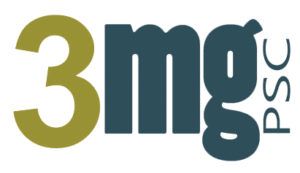Disassembling and reassembling appliances can be necessary for cleaning, maintenance, or repairs. However, it’s crucial to approach these tasks with safety in mind to prevent accidents and ensure the proper functioning of the appliances. Here’s a general guide on how to safely disassemble and reassemble appliances:
Safety Precautions:
1. Disconnect Power:
Before starting any disassembly, unplug the appliance from the power source to avoid electric shocks. For larger appliances, such as refrigerators or washing machines, turn off the power at the circuit breaker.
2. Gas Appliances:
If you’re working with gas appliances, turn off the gas supply before starting the disassembly. If unsure, consult the manufacturer’s guidelines or a professional technician.
3. Read the Manual:
Always refer to the appliance’s user manual for specific instructions on disassembly and reassembly. The manual provides valuable information about the appliance’s components, potential hazards, and recommended procedures.
4. Use the Right Tools:
Ensure you have the appropriate tools for the job. Using the correct tools not only makes the process easier but also reduces the risk of damaging components or injuring yourself.
5. Protective Gear:
Wear appropriate personal protective equipment (PPE), such as gloves and safety glasses, to protect against cuts, electrical shocks, or exposure to potentially harmful substances.
Disassembly:
1. Document the Process:
Take pictures or make notes as you disassemble the appliance. This will help during the reassembly process, ensuring components are placed back in the correct order.
2. Organize Parts:
Keep small parts organized by placing them in labeled containers or plastic bags. This helps prevent loss and confusion when reassembling.
3. Follow a Systematic Approach:
Start by removing visible components and work your way inward. Keep track of screws, bolts, and other fasteners. Group similar parts together.
4. Avoid Force:
If a part is difficult to remove, consult the manual. Avoid using excessive force, as this could damage components or lead to injury.
5. Appliance Repair Phoenix Professional:
For complex repairs or if you’re unsure about the disassembly process, consider hiring a professional appliance repair Phoenix. Experts in appliance repair can efficiently diagnose issues, perform repairs, and ensure the safety of the appliance.
Reassembly:
1. Reference Documentation:
Use the pictures or notes taken during disassembly to guide you through the reassembly process. Follow the steps outlined in the user manual.
2. Check for Damaged Parts:
Before reassembling, inspect all components for damage. Replace any worn or broken parts to ensure the appliance functions properly and safely.
3. Tighten Fasteners Securely:
Ensure that all screws, bolts, and other fasteners are tightened securely. Loose components can lead to malfunctions or accidents.
4. Reconnect Power:
Only reconnect the power source once the appliance is fully reassembled. Test the appliance to ensure it is working correctly.
5. Dispose of Waste Properly:
Dispose of any replaced or damaged parts according to local regulations. Some components may require special disposal methods.
FAQs (Frequently Asked Questions):
1. How often should I inspect and maintain my washing machine?
Regular inspection and maintenance are recommended at least once a year. However, if you notice any unusual noises, leaks, or performance issues, it’s advisable to address them promptly.
2. Can I perform washing machine repairs myself?
While simple tasks like cleaning filters or hoses can be DIY, more complex repairs may require professional assistance. For optimal safety and efficiency, consider consulting a washing machine repair specialist, especially for issues involving electrical components.
3. What are common signs that my washing machine needs repair?
Signs include unusual noises, leaks, failure to start, improper draining, or issues with the spin cycle. If you encounter any of these issues, it’s recommended to seek professional help.
4. How can I prevent washing machine water damage?
Regularly check hoses for leaks, ensure the machine is level to prevent excess vibration, and promptly address any leaks or drainage issues. Additionally, consider installing a water leak detection device for added protection.
5. Are there specific detergents I should use to avoid damaging my washing machine?
It’s advisable to use detergents specifically designed for high-efficiency (HE) machines. Using the correct detergent helps prevent soap scum buildup and maintains the efficiency of your washing machine.
6. What should I do if my washing machine is not draining properly?
Check for clogs in the drain hose or pump filter. If the issue persists, it might be a malfunctioning pump or a more complex problem that requires professional attention.
7. How do I find a reliable washing machine repair service in my area?
To find a reliable washing machine repair service, you can perform an online search using keywords such as “washing machine repair” and include your location. For instance, you can visit https://www.washingmachinerepair.org/ for professional services.
8. What sets a professional washing machine repair service apart?
Professional services often have certified technicians, prompt response times, and access to genuine replacement parts. Check reviews and testimonials to gauge the reputation of the service provider.
9. Can I use generic replacement parts for my washing machine repairs?
It’s recommended to use manufacturer-approved or genuine replacement parts to ensure compatibility and optimal performance. Generic parts may not meet the same quality standards.
Conclusion
By following these guidelines, you can safely disassemble and reassemble appliances, maintaining their functionality and ensuring the well-being of yourself and others. Always prioritize safety and, when in doubt, consult professional technicians or the manufacturer for guidance.







 The 2024 virtual Men’s Round Table will be held Q4, 2024, date TBD.
The 2024 virtual Men’s Round Table will be held Q4, 2024, date TBD.












